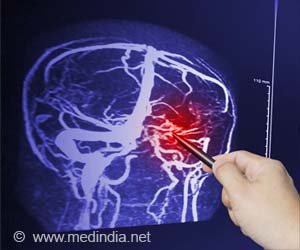AI Revolutionizes Brain Tumor Diagnosis

Jeroen de Ridder, research group leader within UMC Utrecht and Oncode Institute: “Recently, Nanopore sequencing became available: a technology that helps to read DNA in real time. For this, we developed an algorithm that is equipped to learn from millions of simulated realistic ‘DNA snapshots’. With this algorithm, we can identify the tumor type within 20 to 40 minutes. And that is fast enough to directly adjust the surgical strategy, if necessary.”
Bastiaan Tops is in charge of the Pediatric Oncology Laboratory at the Princess Mxima Center. He brought together the new technology and the needs from the operating room. This was made possible by funding from the KiKa foundation and, more specifically, to the extensive biobank that the Mxima Center has maintained for years. Among other things, this biobank stores tissue from children with brain tumors. The algorithm was trained and tested using the biobank.
Advertisement
Consequently, the whole procedure was also carried out several times during actual brain surgeries, from taking the tissue in the operating room to determining the tumor type. In Utrecht, this happened with children, and in Amsterdam with adults. Total length of the procedure: 60 to 90 minutes.
The Princess Mxima Center has decided that the results of the technique are sufficiently reliable and is already using it with children for whom the outcome may determine the surgical strategy. Amsterdam UMC will also use the technique in daily practice, to help them speed up diagnosis.
Eelco Hoving, pediatric neurosurgeon and clinical director of neuro-oncology at the Mxima Center, is excited about the possibilities of DNA analysis during surgery: “During surgery, a small remnant of tumor tissue is sometimes deliberately left behind to prevent neurological damage. But if it will later turn out, for example, that the tumor is very aggressive, a second surgery may still be necessary to remove that last remnant. This will again create risks and stress for patients and their families. This can be avoided now because we will already know during the first surgery what type of tumor we are dealing with.”
Jeroen de Ridder: “It is wonderful that we have been able to actually make the step into clinical practice by combining all areas of expertise, from basic researchers to pathologists and surgeons. By doing so, we can help surgeons to optimize the outcome of brain tumor surgery.”
To use the new technique even more widely and structurally, more research is needed. For instance, more tumor types should be added to the algorithm. In this way, international standards will be met, allowing comparison of data. Also, the outcomes of the new and current (lengthier) method will be further compared, in collaboration with other (inter)national centers. This should make clear whether the new method will also contribute to patients’ quality of life in the long term.
Reference :
- Ultra-fast deep-learned CNS tumour classification – (https://www.nature.com/articles/s41586-023-06615-2)
Source: Eurekalert
Source link
#Revolutionizes #Brain #Tumor #Diagnosis



